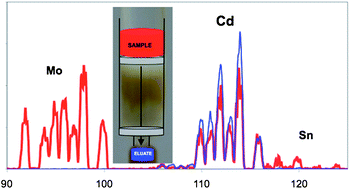Trace concentrations of cadmium in water, soil and industrial settings can have devastating health effects if not detected. Furthermore, measuring accurate cadmium levels in these complex samples is hindered by signal interference from other metals such as tin, molybdenum, and zirconium.
Robert Thompson and Steven Christopher in the United States developed a four-step separation methodology to remove these metals, and then used inductively coupled plasma mass spectrometry to measure cadmium concentrations. For this procedure, commercially available solid phase extraction cartridges isolate most of cadmium and strong ion exchange chromatography removes tin and molybdenum. This unique sample preparation facilitates the detection of low cadmium concentrations in marine sediment and rice flour which contain high levels of tin and molybdenum respectively.

Determination of cadmium in samples containing molybdenum and tin
To know more about this study, please access the link below. This paper will be free to read until February 18th.
Novel separation for the determination of cadmium by isotope dilution ICP-MS in samples containing high concentrations of molybdenum and tin
Robert Q. Thompson and Steven J. Christopher
Anal. Methods, 2013, Advance Article
DOI: 10.1039/C2AY26212F










